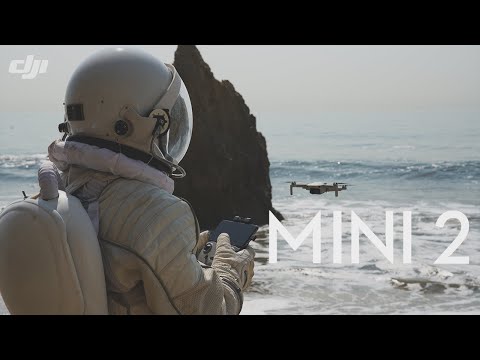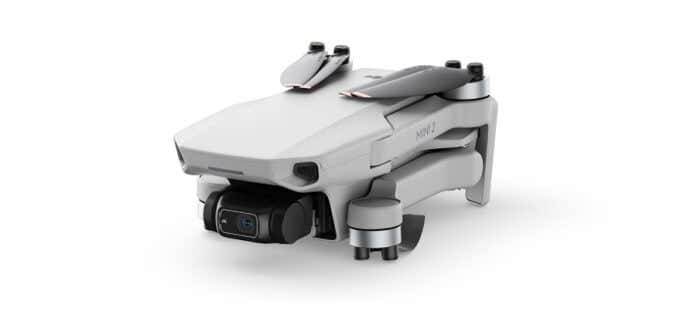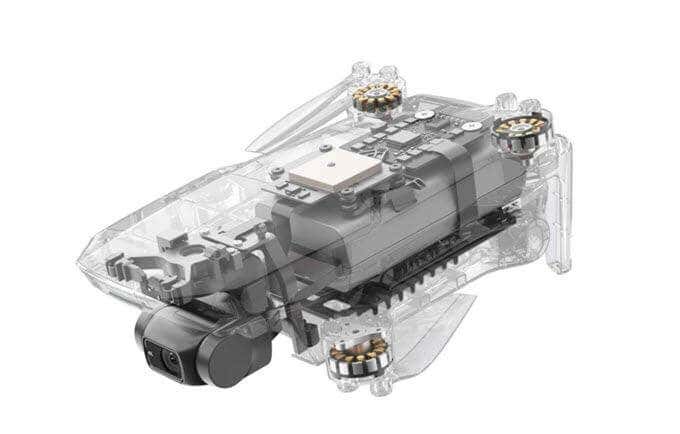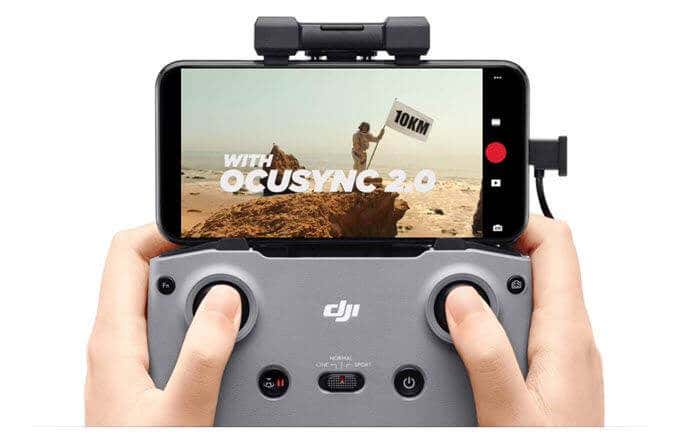The name is however the only place where DJI has made a concession. In every other area, the Mini 2 is an improvement over the original. The big question is whether these improvements are worth shelling out for an upgrade or not. We’re going to look at why the Mini 2 is a drone worth considering and look at the various ways in which DJI has upgraded their plucky little machine, compared to their pioneering featherweight champion.
Why Buy a Mini at All?
This article is mainly aimed at current owners of the Mavic Mini who might be wondering if they’d be better off buying the new model. However, in case you’re actually trying to decide between picking up the Mavic Mini at a reduced price or the Mini 2 at it’s retail amount, here’s what you need to know. The Mini drone from Mavic has one major claim to fame. The both weigh less than the 250g cutoff point for drone licensing that exists in many countries. This limit was put in place in order to prevent the need for toy drones to require registration. DJI seemed to take this as a personal challenge and proudly put a sticker with “249g” on the sides of the Mini. Just in case a nosey law enforcement person wanted to see your permit. Since then, lawmakers have become wise to the latest in lightweight drone technology. Which means that, regardless of how light a drone is, the criteria is now whether that drone has a camera or not. In countries such as the UK that have instituted this new definition, you’ll need a licence for a Mini. If you use your drone for commercial purposes, you may need a ground pilot’s licence regardless of drone weight as well. With this legal advantage quickly disappearing, the appeal of the Mini is largely it’s size, ease of use, and phenomenal video quality for its price. It’s still a great product line, even if its previous selling point has been nullified.
A Better Camera
The first big improvement with the Mini 2 is the jump to 4K video. The Mavi Mini offered 2.7K video, which made for excellent 1080p footage and allowed for a bit of lossless reframing. However, using that footage in a 4K project did look a little soft. The Mini 2 solves this by offering crisp 4K footage. Albeit at the same 30 frames per second of the original drone. You also get 4X digital zoom and the option to take RAW photographs. That’s a huge step up for still photography. With RAW photos you can correct and enhance the image without any loss whatsoever.
Improved Wind Resistance
The Mini 2 has significantly stronger motors, without any compromise to flight time which is around 31 minutes in windless conditions. It can fly at up to 16 meters per second, compared to 13 for the Mavic Mini. It’s also moved up one category in DJI’s wind resistance scale. So the Mini 2 will do a bit better when the weather picks up. Instead of drifting away like a very expensive balloon. The Mavic Mini is no slouch when it comes to flying in choppy conditions, but this better level of performance in the upgrade will protect the drone to a greater degree. It also means you can get to your filming position more quickly and keep up with fast moving objects such as action sports participants or off-roading vehicles more easily. Having more performance on tap is never a bad thing when it comes to drone videography. Although it should not be at the expense of everything else.
Advanced Wireless Transmission Technology
Wireless connectivity is perhaps the biggest improvement the Mini 2 brings to the table over its predecessor. The Mavic Mini uses plain old WiFi to transmit data between the radio controller and the craft. That’s extremely sensitive to interference and has relatively limited range. We’ve had trouble with our own Mavic Mini in urban areas where lots of other WiFi devices exist or where structures with a high metal content interfere with the signal. While signal interference will do nothing to put your drone in danger, it does mean you might miss moments because the drone loses connectivity at the wrong time. For many types of video that doesn’t matter. That breathtaking waterfall isn’t going anywhere after all. But if you’re filming stuff that only happens once, such as your friends’ skateboarding accident, the WiFi transmission system can spoil your fun. The Mini 2 comes with a proprietary technology called OcuSync (Version 2.0). This more than doubles the maximum transmission range, and OcuSync 2.0 is also much more resistant to interference. Which means your video feed stays clear and relatively lag free, while the drone has no issue accepting your commands. OcuSync was reserved for Mavic Pro and (recently) Mavic Air 2 Drones. As well as other high-end DJI craft. Having it in the entry-level Mini 2 is a big upgrade.
Mavic Mini Vs Mini 2
You have a few purchasing options with both of these drones. As always, DJI offers the drones by themselves or as part of a Fly More Combo. Your budget should be your guide, but we strongly recommend that you always opt for the Fly More Combo if you can afford it. Buying the goodies in the combo separately is always substantially more expensive and it’s all useful stuff. The Mavic Mini retails for $399 ($499 for the combo) and the Mini 2 will cost you $449 ($599 for the combo).
Should You Upgrade to the Mini 2?
There are two answers to this question and it depends on what exactly you’re using the drone for. If you’re using the Mini as a personal drone, to have fun with and capture footage to share on social media and for personal projects, then there’s no urgent need to buy this new version. The footage and performance of the original Mini is still amazing. Few people even have 4K display devices and if your shots aren’t mission-critical then OcuSync isn’t that big a deal. However, we know there are plenty of people who actually use the Mavic Mini for professional purposes. Either because it’s the only drone they can take across borders without needing a licence at the destination or simply because even something like the Air 2 is too big to carry around all the time. You might be surprised at how much Mavic Mini footage ends up in professional projects. Because it can go places other, larger drones simply can’t. For those users, the Mini 2 is almost a must-buy. 4K video is becoming standard for professional content producers. OcuSync helps ensure you get shots where there’s no opportunity for a second take. The improved wind resistance and speeds also bring the Mini 2 dangerously close in performance to much more expensive professional drones, while still having that go-anywhere size advantage. The Mini 2 is going to be an essential part of many professional video tool sets despite not being sold as one.





